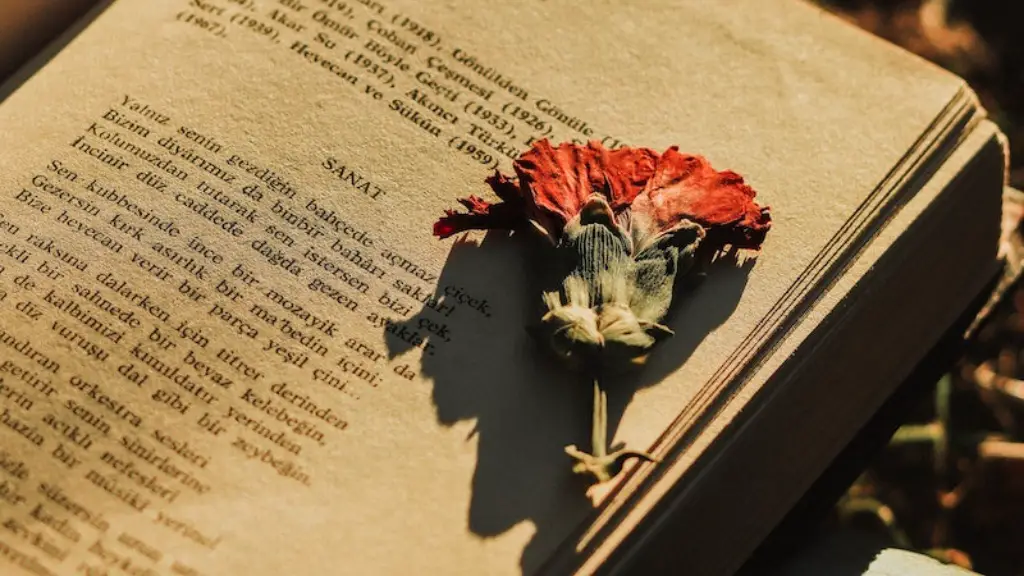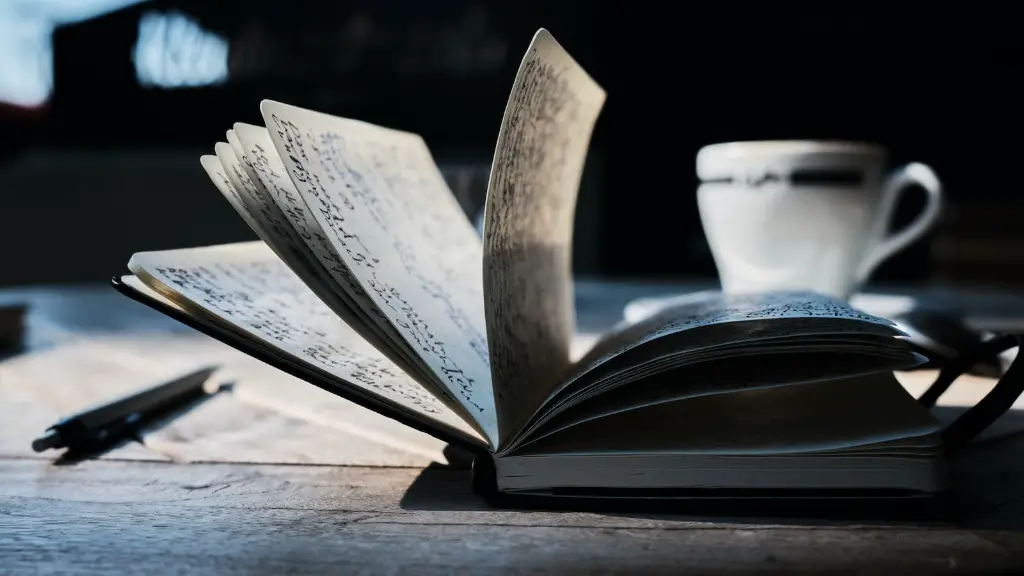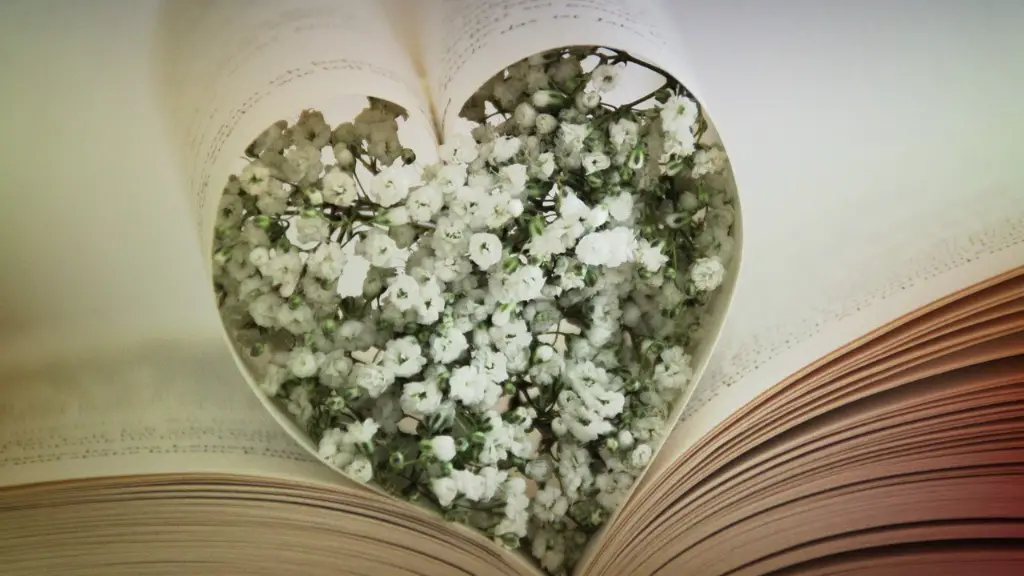Emily Dickinson often explored themes of death and immortality in her poetry, which reflect the preoccupation with death that was common among authors of the Romantic era. In addition, Dickinson’s highly individualized style and her willingness to experiment with form and language align her with the Romantics’ emphasis on individuality and innovation.
Emily Dickinson was a 19th-century American poet who is known for her unique style of writing and her reclusive lifestyle. Many of her poems reflect the themes of romanticism, such as the power of nature, the strength of the human spirit, and the importance of love and friendship.
How does Emily Dickinson poetry reflect Romanticism?
Emily Dickinson was a prolific poet who wrote during the Romantic period and the early years of the Realist period. Her poetry is marked by her focus on love, nature, faith, and death. Because she was writing during the transition between these two time periods, her work reflects elements of both styles.
While Dickinson is certainly known for her focus on death and the harsh realities of life, it’s important to remember that she was writing during the Romantic period. This means that the emphasis on nature and the importance of feelings and emotions were just as important to her as the dark subjects she is now known for.
Is Emily Dickinson a dark romanticism
Dark Romantics focus on human fallibility, self-destruction, judgement, punishment, as well as the psychological effects of guilt and sin. Authors who embrace this genre include Edgar Allan Poe, Nathaniel Hawthorne, Herman Melville, and Emily Dickinson. These writers sought to explore the dark side of human nature, and the ways in which we can be our own worst enemies. They were also interested in the idea of justice, and how we often bring about our own downfall through our actions. This genre can be seen as a response to the optimism of the Romantic Movement, which emphasized the goodness of humanity. Dark Romantics believed that we needed to acknowledge the darkness within us in order to truly understand ourselves.
Dark Romanticism is a literary genre that emphasizes the dark, mysterious, and supernatural elements of a story. In Emily Dickinson’s poem “Because I could not stop for Death,” the dark and creepy symbols of graves and death create a dark and romantic atmosphere. Dickinson’s theme of death and acceptance of death makes this an excellent example of Dark Romanticism.
What style of poetry is Emily Dickinson known for?
Emily Dickinson is one of America’s most famous poets. She is known for her use of slant rhyme, conceits, and unconventional punctuation. She was also known for her reclusive habits. Emily Dickinson was born in Amherst, Massachusetts and came from a prominent family.
Emily Dickinson’s writing style is certainly unique. She used extensive dashes, dots, and unconventional capitalization, in addition to vivid imagery and idiosyncratic vocabulary. Instead of using pentameter, she was more inclined to use trimester, tetrameter, and even dimeter at times. This made her writing stand out from the rest, and it is one of the things that makes her such an important figure in American literature.
What are the main themes of Emily Dickinson poetry?
Emily Dickinson was a highly observant person, and she drew on her observations of the world around her to write about topics that interested her. She frequently used images from nature, religion, law, music, commerce, medicine, fashion, and domestic activities to explore universal themes such as the beauty of nature, the nature of the self, death and immortality, and love. By writing about what she knew and what intrigued her, Dickinson was able to create a body of work that is both personal and relatable.
Emily Dickinson’s poems often employ short stanzas, usually quatrains, with short lines and simple rhyme schemes. However, some of her poems also employ more complicated stanzas with longer lines and more complex rhyme schemes.
What are the major themes of Emily Dickinson
Dickinson was unique in her approach to literary themes common in her era. While other writers of her time focused on the outward expression of emotion, Dickinson instead chose to explore the inner workings of the human soul. In doing so, she captured the imaginations of readers and continues to do so today. Her work is timeless and relevant, no matter the era in which it is read.
There has been much scholarship lately indicating that Emily Dickinson had a lifelong love affair with her childhood friend Susan Gilbert, who later became her sister-in-law after she married Emily’s brother Austin Dickinson. They reportedly lived next door to each other throughout their adult lives.
What type of literature is Emily Dickinson?
Emily Elizabeth Dickinson was one of the most important American poets of the 19th century. Although little-known during her life, her poetry has since been widely praised for its innovation, values, and insight. Dickinson was a prolific writer, producing hundreds of poems during her lifetime. Her work often explores the themes of death and immortality, making her a key figure in the literary genre of death poetry.Dickinson’s poetry is noted for its unconventional style and form, as well as its use of unusual and suggestive language.
The Dark Romantics were a group of writers who emerged in the early 1800s as a reaction to the optimism of the Transcendentalist movement. These authors, such as Edgar Allan Poe, Nathaniel Hawthorne, and Herman Melville, were known for their dark and often pessimistic stories. Many of their works were influenced by the events of the Industrial Revolution, which contributed to a feeling of unease and isolation in society. The Dark Romantics often explored themes of madness, evil, and the supernatural, and their stories typically had a Gothic or horrific tone. Despite their dark subject matter, these writers were some of the most popular of their time, and their work continues to influence literature today.
What is the difference between Dark Romanticism and romanticism
The Dark Romantics were a faction of the larger Romantic movement that emerged in the early 19th century. They favored emotion and intuition over reason and logic, and their work sought to explore the dark, often supernatural, side of human experience. The Dark Romantics were heavily influenced by the Gothic genre, and their writing often includes elements of horror, the supernatural, and the uncanny. Edgar Allan Poe is considered one of the most important Dark Romantics.
All three of the examples mentioned are dark romances because they all contain elements of the supernatural, the grotesque, and the horrific. “Tell-Tale Heart” is representative of the subgenre because it features a narrator who is slowly driven insane by guilt and paranoia. “The Birth-Mark” is another example of a dark romance because it tells the story of a scientist who is obsessed with perfection and who ultimately destroys the woman he loves in his quest to remove a birthmark from her face. “The Minister’s Black Veil” is representative of the subgenre because it is a story about a minister who is haunted by his own guilty conscience.
How was Emily Dickinson a feminist?
The write is discussing how the author’s honest and open writing made her an early feminist voice, even though she appeared to be submissive. This is an interesting perspective that highlights the power of the written word to create social change.
It is interesting to note that Dickinson employs a variety of poetic devices in her poetry to create an atmosphere of ambiguity. In particular, her use of imagery, enjambment, and dashes encourages the reader to second-guess the meaning of her words.
For example, in the poem “I’m Nobody! Who are you?”, Dickinson uses enjambment to disrupt the flow of the poem and create confusion:
“I’m nobody! Who are you?
Are you nobody, too?
Then there’s a pair of us — don’t tell!
They’d banish us, you know.”
The poem starts with the speaker declaring their own lack of identity, but then abruptly asks the reader if they, too, are nobody. This shift creates a sense of disorientation that is further emphasized by the use of dashes instead of traditional punctuation.
Ultimately, these devices contribute to the overall ambiguity of Dickinson’s poetry, making it open to interpretation.
What influenced Emily Dickinson to write poetry
Emily Dickinson’s poetry was deeply influenced by the Metaphysical poets of seventeenth-century England. The Metaphysical poets, including John Donne and Andrew Marvell, were known for their complex and often paradoxical imagery, and Dickinson’s poetry frequently displays similar qualities. In addition, Dickinson was deeply influenced by her reading of the Book of Revelation, which likely informed her dark and often mysterious poems. Finally, her upbringing in a Puritan New England town encouraged a Calvinist, orthodox, and conservative approach to Christianity, which is reflected in many of her poems.
Emily Dickinson’s poetry is characterized by its unconventional themes, individualism, transcendentalism, spiritualism, realism, and symbolism. Dickinson was a highly original poet who explored new and often controversial subjects in her work. She was also a very individualistic writer, preferring to write alone and outside of the mainstream literary world. Dickinson’s transcendentalism is evident in her belief in the power of the individual to transcend the physical world and connect with the divine. Her spiritualism is also evident in her poetry, as she often wrote about death and the afterlife. And finally, her realism and symbolism can be seen in her use of simple, everyday objects and events to represent larger ideas and emotions.
Final Words
Emily Dickinson’s poetry is often seen as reflecting the values of Romanticism, with its focus on the individual, the emotions, and the natural world.
Emily Dickinson was a poet who lived in the mid-19th century. She is considered one of the most important figures in American poetry. Her work is known for its focus on death, its use of symbols, and its exploration of the human psyche. Dickinson was influenced by Romanticism, and her work reflects this influence.




